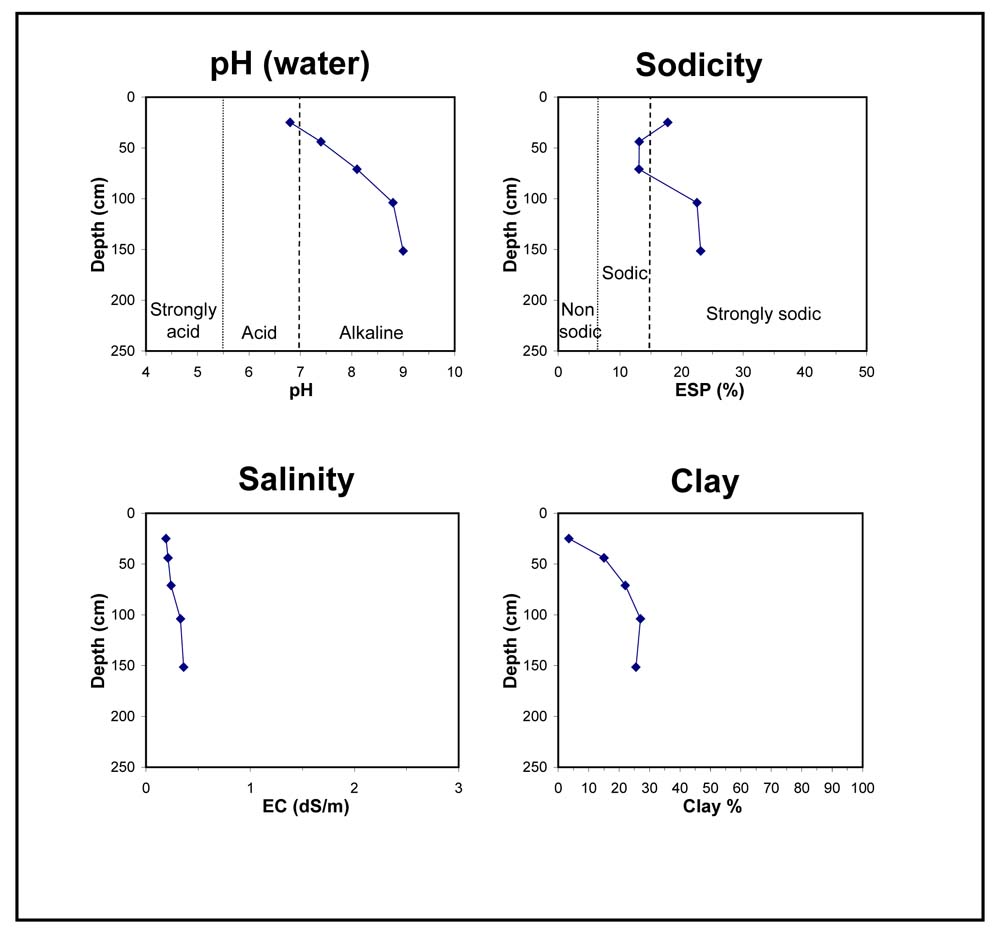GL26
| Site: GL26 | Land Unit: Follet Dunes and Plains |
| Aust. Soil Class.: Hypercalcic, Subnatric, Grey SODOSOL (confidence level 1) | |
 |
|
Site Description:
| Slope: 2% | Geology: Quaternary aeolian |
| Landform pattern: Plain | Position in landscape: Swale |
| Internal drainage: Poorly drained |
Soil Profile Morphology
| A11 | 0-15 cm | Loamy sand |
| A12 | 15-35 cm | Dark grey (10YR4/1) loamy sand, apedal structure, pH 6.8; transition to: |
| A31 | 35-55 cm | Black (10YR2/1) clay sand, massive structure, pH 7.4; transition to: |
| A33 | 55-90 cm | Dark greyish brown (10YR4/2) loamy sand, massive structure, very few fine soft calcareous segregations, pH 8.1; transition to: |
| Subsoil | ||
| B21 | 90-120 cm | Grey (10YR5/1) sandy clay, many faint yellow mottles, massive to weak structure, medium soft calcareous segregations and nodules are common, pH 8.8; transition to: |
| B22 | 120-190 cm | Dark grey (10YR4/1) sandy clay, massive to weak structure, many medium soft calcareous segregations and nodules, pH 9.0; transition to: |
| C | 190-220+ cm | Massive structure. |
Key profile features:
- Strong texture contrast between topsoil and subsoil
- Sandy topsoil
- Calcareous nodules throughout
- Strongly alkaline subsoil
- Sodic surface horizon
- Sodic subsoil
- Mottled subsoil
- Deeper topsoil dispersive when worked when wet
- Subsoil dispersive when worked when wet



